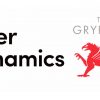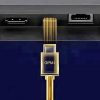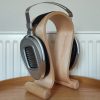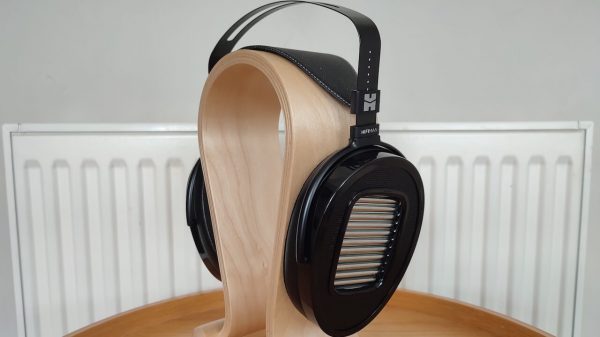Celebrating 3 birthdays during a global pandemic has been rather cathartic and certainly changed my perspective. I’m not jumping into the vaccination debate, but after two bouts with COVID (and both vaccinations) and some lingering issues — I’m officially done. I’ve moved on and started living life again because I can’t function like a normal person and be productive like a caged rat. I don’t deal well with sitting still or avoiding people at Barnes and Noble. Products like the Schiit Audio Magni 3+ have proven their worth over the past 24 months.
With the candles on my 50th birthday cake still smoldering, word came in the form of an email that my day job was going remote. Cases in New Jersey had not even begun their frightening ascent, but my employer had already been forced to shutter in Asia and offices in America, Poland, France, and Germany were about to suffer a similar fate. When COVID-19 began to affect my physical health, life became very different and events forced me to quarantine in the basement where I could work, shower, sleep, and listen to headphones through the Schiit Audio Magni 3+ headphone amplifier.
With 3 children spread out across the globe attending school through Zoom (not sure how much they learned), I was banned from playing music through loudspeakers until after dinner which forced me to become more acquainted with headphones from HiFiMan, Dali, and Meze Audio. The Schiit Audio Magni 3+ takes up very little space on the desktop; it’s barely larger than a typical paperback novel.
Dedicated headphone amplifiers have been a growing category in audio for almost 7 years with Schiit Audio being a huge part of that growth; their direct to consumer sales model has kept prices low and allowed them to offer a wider range of headphone amplifiers, integrated amplifiers, DACs, and power amplifiers that appeal to both the headphone newbie, and global head-fi community.
Schiit Audio has also managed to succeed building their products domestically; a rather significant achievement considering they only charge $99 for the Magni 3+ and their top DAC – the Yggdrasil ($2,449) is competitive with some of the best DACs in the world for considerably less money.
The Magni 3+ doesn’t try to overachieve; it kinda gets there rather naturally.
The California-based company isn’t alone in the domestic market; brands such as Linear Tube Audio, Ampsandsound, Woo Audio, Bottlehead, and AudioQuest have all helped raise the performance bar and offer consumers more choice than they have ever had before.

How much good Schiit can they pack in a box?
The Magni 3+ is a fully discrete, current-feedback headphone amplifier that offers two important features that will matter to most users; it’s extremely quiet and powerful enough for the vast majority of headphones that will likely be plugged into it.
Schiit Audio designed the Magni 3+ to work as both a discrete headphone amplifier, and a single-source pre-amplifier. In its secondary role, the Magni 3+ can be connected to an external power amplifier, or a pair of active loudspeakers; a relay mute is part of the design for a delayed start-up and fast shut-down. It’s perfectly safe to leave your headphones plugged in even when you are not using them, and the amp automatically disconnects the pre-out when you plug in a pair of headphones.
Depending on your type of headphone, the Magni 3+ also offers two gain settings for users of IEMs, and more power-hungry planar magnetic cans. While the placement of the switch on the rear panel is not ideal, the reality is that most users will be using the amp on a desktop and unless your hands are freakishly large – it’s easy to slide your hand behind and make the change in less than a second.
Unlimited power…
The Magni 3+ may not have control of the Empire on its agenda, but it’s certainly a lot of power packed into a very small chassis. Its quoted frequency response is 20Hz – 20kHz +/- 0.04dB.
- Maximum Power, 16 ohms: 2.8W RMS per channel
- Maximum Power, 32 ohms: 2.4W RMS per channel
- Maximum Power, 50 ohms: 1.6W RMS per channel
- Maximum Power, 300 ohms: 410mW RMS per channel
- Maximum Power, 600 ohms: 215mW RMS per channel
I’ve been blessed with a wide assortment of headphones this year, so it was easy to pick two and run with them for the past few months. Both headphones fall below my ceiling of $400 and offer very easy loads.
The Meze Audio 99 Classics ($309) are designed and manufactured in Romania by a very dedicated group of engineers and artisans. The closed-back dynamic 99 Classics are not only one of the best sounding headphones in their price range, but a gorgeous piece of industrial design that illicit plenty of questions on the train or in my local coffee shop.
When I’m on the road with my iPhone, an AudioQuest Dragonfly Cobalt USB DAC/headphone amplifier ($299.95) is my weapon of choice – and a very good option with the warm sounding 99 Classics. I do love the Helm Audio Bolt but the Meze headphones need a bigger jolt.
HiFiMan has been manufacturing planar magnetic headphones for over a decade, and I’ve been a customer for almost six years. The Sundara ($349) are an open-back planar magnetic design that do not require a lot of power to come alive; an issue with some of the more expensive planar headphones on the market.
I’m trying very hard to connect with people right now…
Which is pretty much how I felt about a week into my bout with COVID.
Music has the ability to swing your mood and take you somewhere else – something that I desperately needed stuck in my basement.
John Lee Hooker’s It Serves You Right to Suffer (Qobuz, 16-bit/44.1kHz) seemed like the logical place to start with the Magni 3+ and the Meze 99 Classics which have a much warmer tonal balance than the Sundara. Hooker’s gritty blues flowed with excellent pace and when his trademark growl burst through, the Magni 3+ just stepped aside and let it all shine through.

The Magni 3+ does not have an overly warm tonal balance which I think is just the right flavor for amplifier at this price. The Meze certainly benefitted from the Schiit’s level of transparency and ability to illuminate detail.
The 99 Classics have very powerful bass response; although I do wish it was a bit tighter and not as visceral. The Magni 3+ emphasizes speed and definition over sheer impact which did help to tone it down with heavy metal, and classic rock.
Jazz and the Magni 3+ were a very strong combination; the Meze’s darker tonal balance kept instruments from losing too much color while preserving the amp’s excellent detail retrieval and transparency.
McCoy Tyner’s The Real McCoy (Qobuz, Blue Note Records, 24-bit/192kHz) is a wonderfully expressive album with a real sense of flow from start to finish. The Magni 3+ managed to put some space between each musician and let the 99 Classics flesh out the piano and horns.
Switching to the Sundara which is a more open sounding headphone, the aforementioned albums and everything else I threw at the Magni 3+ through TIDAL and Qobuz had a much larger feeling of space with a top end that was more detailed. The Sundara has superb midrange resolution that is especially noticeable on vocals.
The Magni 3+ can’t match the fleshed out texture and midrange resolution of something like the Linear Tube Audio MZ3 (which is about as good as it gets), but for $99 – it’s level of performance is really something to extol. There is nothing near its price that can compare.
An American classic.
For more information: www.schiit.com/products/magni-1
Buy it: $99 Schiit.com / $119 at Amazon (Heresy version)




































ORT
February 26, 2022 at 2:55 pm
Relatively known fact about…Molly Ringwald!
She is a Real Jazz vocalist! And superbly so!
ORT